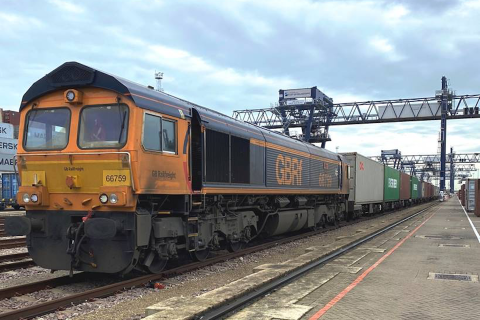TEN-T revision is on the right track for intermodal transport

The ongoing TEN-T regulation amendment seems to be on the right track to support the growth of intermodal and combined transport. “The infrastructure parameters for longer trains, the provision of sufficient track capacity for them and the mandatory modernisation of transhipment terminals are the key elements that make the revision successful”, says association UIRR.
The TEN-T regulation revision is critical for building an efficient multimodal transport network for the future in Europe. As the EU Commission explains: “Revising the TEN-T Regulation offers a real opportunity to make our Trans-European Transport Network fit for the future and align the TEN-T network’s development to the European Green Deal objectives and the climate targets of the EU Climate Law”.
Some positive news
Transport associations like ERFA and UIRR have been critical to the TEN-T Regulation revision processes, especially for issues like the inadequate track capacity allocation for freight trains, the lack of alternative routes provision during construction periods or the lack of boosting initiatives for long-distance rail freight traffic. However, this time the EU seems to be on the right track according to UIIRR. “We strongly support the European Commission’s proposed TEN-T Regulation amendment”, said the association, stressing that three pillars stand out for intermodal transport.
Pillar number one is “the obligatory rail infrastructure parameters for train length (740m), axle load (22,5t), P400 loading gauge, electrification and interoperability of signalling systems (ERTMS) along the entire core and comprehensive network”. This means that the EU aims to make the infrastructure parameters for longer and heavier intermodal trains universal for the whole TEN-T network.
Pillar number two is the “creation of adequate railway infrastructure capacity (i) to ensure a definite number of train paths for 740-metre-long trains per hour on every TEN-T line, (ii) to elevate the punctuality of freight trains to 90%, as well as (iii) to enable the crossing of an internal railway border of the European Union within 15 minutes”. It seems that the EU is also working on allocating the needed capacity for longer trains that will enable them to occupy a fixed number of tracks while making their border-crossing processes more simple and faster.
The third and final pillar concerns the “mandatory modernisation of existing intermodal transhipment terminals, the obligation to study the available capacity of intermodal terminals and the construction of intermodal terminals where capacity is lacking”. Apart from rail tracks, the EU will also focus on creating optimal conditions for intermodal terminals by modernising existing ones and building new ones where needed. It seems that a significant investment is on its way, which would undoubtedly help intermodal and combined transport become of central importance in the transport sector.
Also read:
You just read one of our premium articles free of charge
Want full access? Take advantage of our exclusive offer




